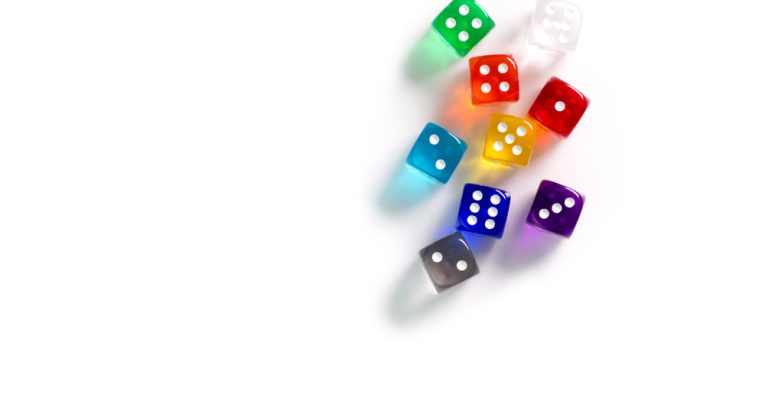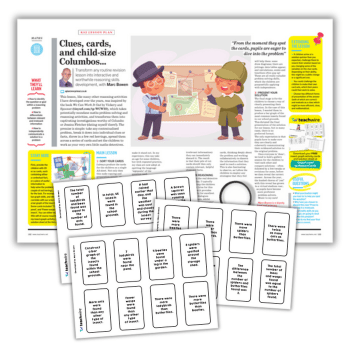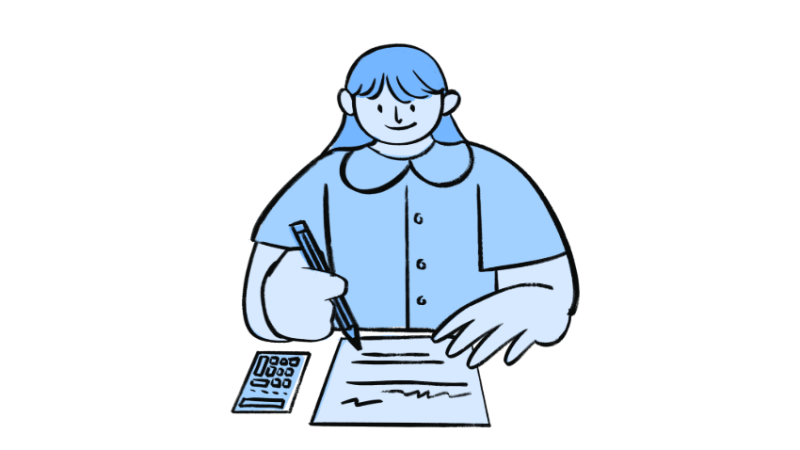Using Dice To Teach Maths In Early Years

Having access to nontraditional dice can be an enormous help when introducing larger numbers

- by Ems Lord

How many ways do children in your setting currently use dice?
I’m guessing they’re very popular for playing board games, but there are plenty of other ways of using them to support young children’s mathematical development, and a huge variety to choose from.
So let’s get rolling by taking a look at children’s very early dice skills.
Start with colours
Before children are ready to be introduced to any type of numbered or dotty dice, they can still enjoy matching activities using coloured dice. For example, in the role-play area, they can take turns rolling a coloured die and search for an item of clothing which matches that colour. If they can find a suitable item, they put it on. The challenge is to see who wears the most items of clothing.
Introducing dots
Once children are confident using coloured dice, they can move on to activities using dotty dice. It’s worthwhile sticking to just one, two or three dots when first introducing them. Here are two of my favourites:
Picnics Children take turns to roll the die and count out that number of teddies for a picnic. They will need to be able to count the dots on their dice, and it is helpful to count with them the same number on their fingers. Then they’ll need to count out the same number of teddies and arrange them for a picnic. They’ll also need to count out the correct number of cups, saucers and items of cutlery for their bears too. This helps them to develop an understanding of one-to-one correspondence, which is an essential early counting skill.
Collections This is a useful extension activity for ‘Picnics’: each child will need their own set of items, eg cars, dinosaurs or farmyard animals. Again, they need to take it in turns to roll the die and recognise the number it represents, but this time they can all enjoy counting out the correct number of items from their different sets. You can join in too, and model checking that you have the correct number.
For more early dice ideas, with accompanying teacher notes, click here.
Extending learning
As children’s number skills develop, you can introduce them to further activities that go beyond the number three and incorporate other resources too. Children love playing with blocks. This next activity combines both their enthusiasm for building towers with a terrific opportunity to extend their early number skills:
Building towers In this activity (click here for a printable PDF of full instructions) the children start by making their own vertical towers. Encourage them to identify the tallest tower in the group. Once they have had time to practise their tower-building skills, you can focus on the maths aspect of the game.
The aim of the game is to build the tallest possible tower before it collapses. Children will need a die labelled with just one, two or three dots on each face, though during the game they’ll be counting larger numbers too.
Remind the children how to roll the die and count the number of dots on its face. For example, you might roll three dots and model counting to three using your fingers. Then take three blocks and begin building your tower. Let the children roll the die, count their dots and choose the correct number of blocks too. Once everyone has had a go at rolling the die and selecting their blocks you can compare the different towers. Which tower has the most blocks so far? Which has the fewest?
Have another round of die rolling and compare the new heights of the towers. Does the same child still have the tallest tower? How tall is the tallest tower now? Which tower has the fewest blocks? Keep going until one of the towers collapses. Cue a lot of laughter amongst the group!
Once they have settled down, encourage them to count the number of blocks that have fallen down. Write down the number of blocks and the name of the child too. Now keep playing the game with the remaining towers until they too collapse. Who managed to build the tallest tower?
Recognising patterns
As children become more and more experienced at playing with their dice, they’ll begin to recognise the dot patterns that represent each number. It’s also important that they experience different patterns too. This enables them to develop the ability to instantly recognise small numbers without having to count them each time, a technique known as subitising.
This next activity introduces children to different ways that they can arrange the dots on their dice.
Rolling sixes
To begin, challenge the children to roll a six. Can they predict how many attempts it might take them? Let them have a try until they have all successfully rolled a six. Ask them how they knew it was a six. They might have counted the dots, or perhaps they just recognised its pattern. Let them reproduce the usual dice six pattern on squared paper using sticky dots.
The next step encourages them to think of different ways to arrange their six dots. Perhaps they could make a single line of six dots? Allow them time to see how many different ways they can make six. Then let them roll the die again until they roll a number different from six. How many ways can they make that number using their sticky dots? Once they have explored each number, support the children to cut out their different arrangements.
Next turn the cards upside down and play a pelmanism, or matching game. If children can turn over two cards with the same number of dots on them then they keep those cards. Afterwards, encourage them to choose their favourite arrangement for each number to label a cube. Then they can use their own labelled cube to play other dice games together. These activities will really help the children to develop their counting skills by recognising different arrangements of the same number of dots. Before long, you’ll be able to bring out those 10-sided dice for them too!
You can find many more early maths activities at nrich.maths.org/early-years, and you can sign up for our NRICH’s free half-termly newsletter by emailing enquiries.nrich@maths.org.
ALL SHAPES & SIZES
Not all dice are created equal, but all can benefit learning It’s easy to assume that all dice are the same, but chances are you’ll have a huge variety of them to hand. They might vary by colour, size or their labelling. Some dice have dots on them, others have words or different colours. Even their shapes might be different. Yes, I did say that dice can have different shapes!
Of course, there’s the traditional cube-shaped dice, with its six faces, usually numbered from one to six, but don’t stop there – I’ve found that having access to nontraditional dice can be an enormous help when introducing larger numbers up to nine (10-sided dice, for example, are often labelled from zero to nine, and young children find them just as fascinating as adults).
Ems Lord is director at NRICH.







